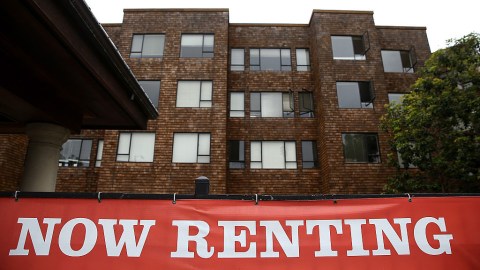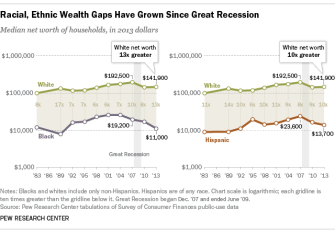Now That the Recession Is over, How Will We Solve the Rent Crisis?

Given the recent news that the Federal Reserve is raising interest rates for the first time since the Great Recession, we might be inclined to think that everything is back to normal. But many Americans who live as tenants in apartments or houses know otherwise. Rent is out of control, and it’s not yet settled to 20th century levels.
Research from Harvard’s Joint Center on Housing Studies indicates that in 2014 there were 21.3 million people in the U.S. who used more than 30 percent of their income to pay rent. The 30 percent figure is a rule of thumb measurement for researchers to determine who is most burdened by their housing costs.
Unfortunately, that’s not even the worst news. The center also found that 26 percent of tenants in the U.S. are so buried by their housing costs that they spend more than half of their income on rent. Those families and individuals don’t have much left over to cover other costs of life, such as food, transportation, and childcare.
How can such cost burden be happening? Researchers found that wages are not keeping up with increases in rent. During the period between 2001 and 2014, household incomes actually decreased. The gap between what tenants make and what they are asked to spend on housing has increased.
The issue of rent costs is especially dire when we consider other changes spurred by the Great Recession, especially wealth inequality. The gap between black and Latino net worth compared to the net worth of whites has grown to a difference of 13 and 10 times, respectively:

Those figures become more problematic when coupled with the fact that certain minorities (and often immigrants) have a higher housing-cost burden when compared to others. It’s important to be aware of subsets within the statistics like these, which can bring to light important disparities.
While the findings point to some families and individuals struggling more than others to pay their bills, the rent crisis is clearly an issue for many Americans. We’ll need solutions soon, before the gap between what people can pay and what they owe becomes too large to handle.
Image Credit: Justin Sullivan / Staff via Getty Images
**
Stefani is a writer and urban planner based in Oakland, CA. She holds a master’s in City and Regional Planning from UC Berkeley and a bachelor’s in Human Biology from Stanford University. In her free time, she is often found reading diverse literature, writing stories, or enjoying the outdoors. Follow her on Twitter: @stefanicox





